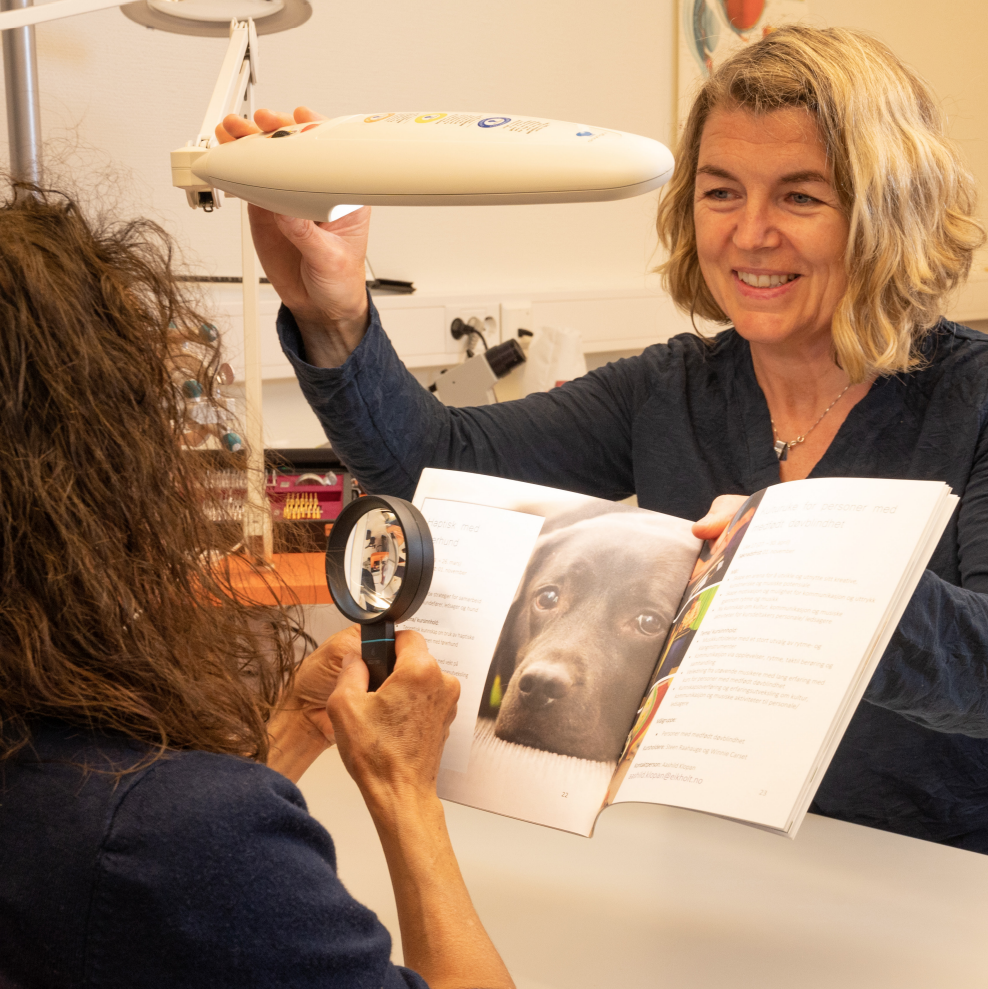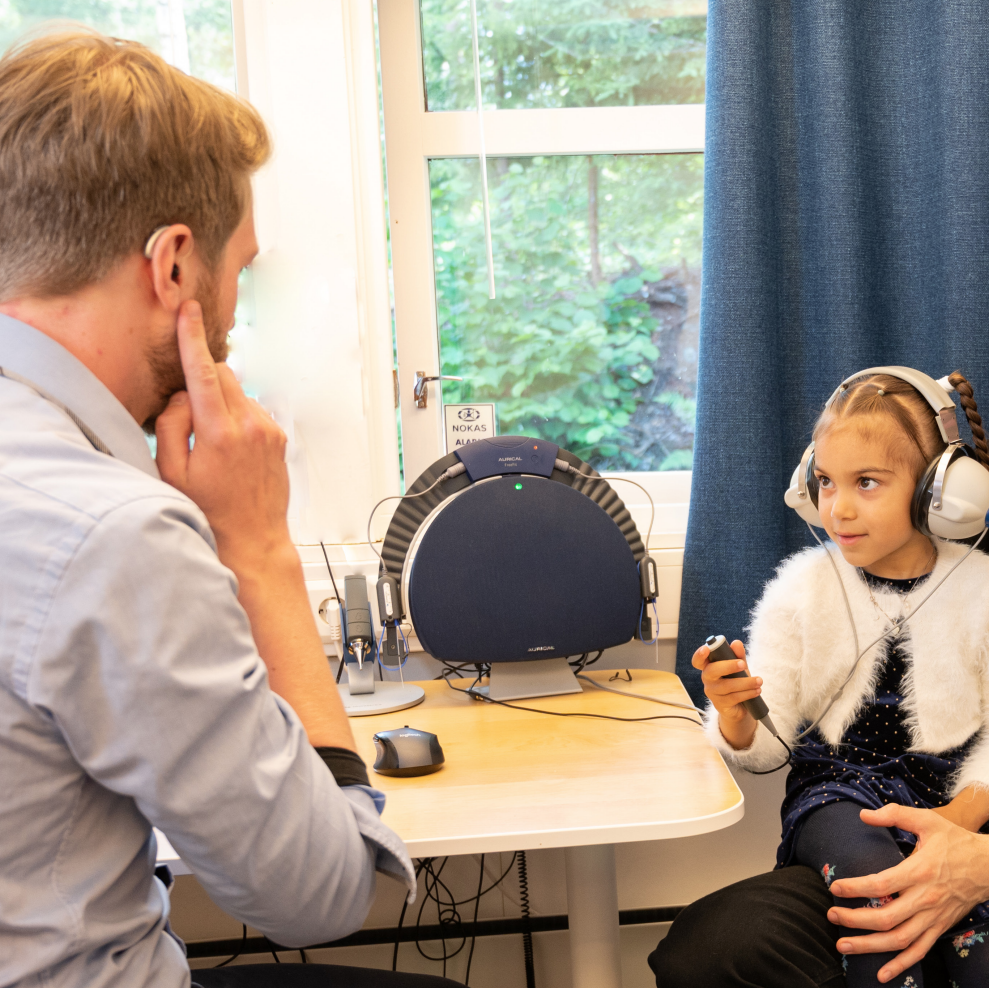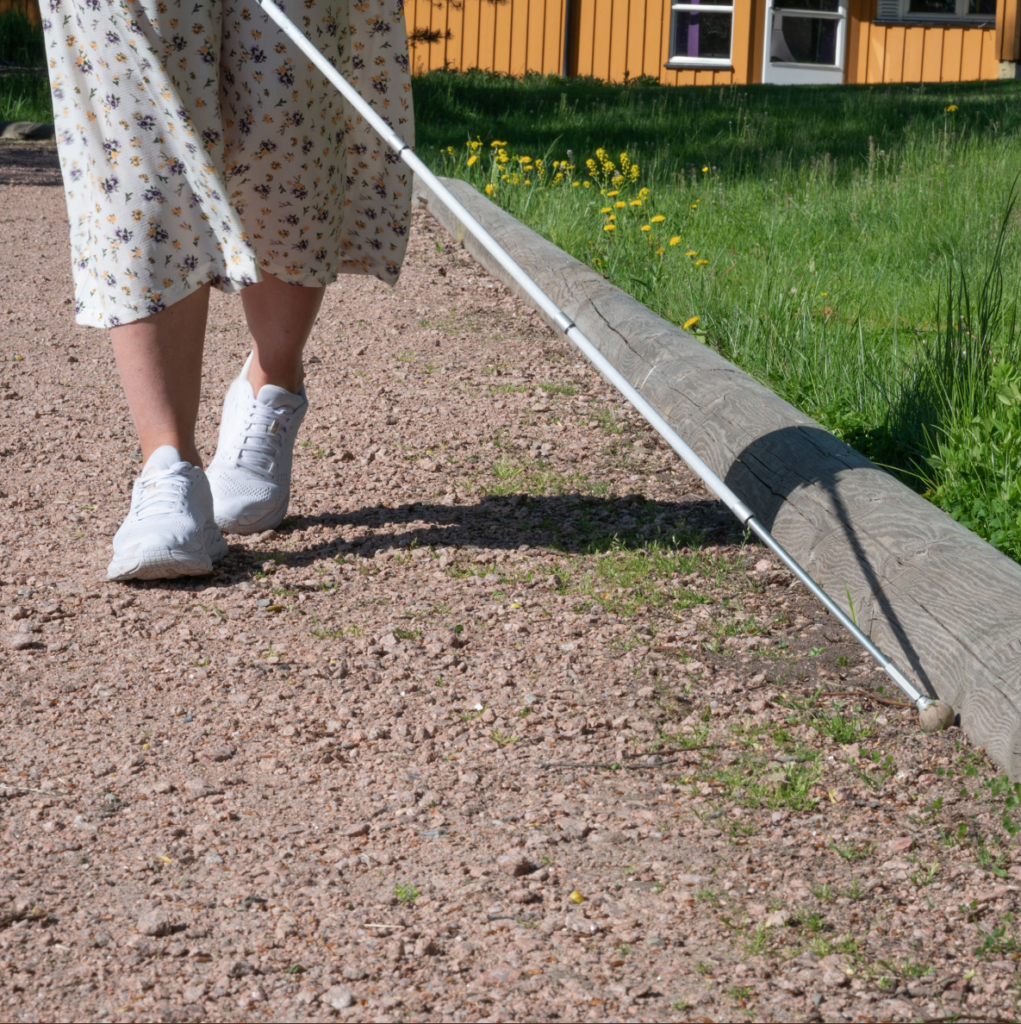AV clinic for vision and hearing assessment
Why does Eikholt have an AV clinic?

Here you can download our brochure about the AV clinic
Sight and hearing are man's most important remote senses. When sight is impaired, we compensate with hearing, and when hearing is impaired, we compensate with sight. If both senses do not work well enough, problems arise that make it difficult to communicate, give and receive information, orientate and move around; these are important functions for coping with everyday life and being able to participate actively in society.
The AV clinic is a word made up of the letters A and V, which stand for Audio = hearing and Visio = vision. At the AV clinic, there are unique opportunities to map and examine visual and hearing function in relation to the activities that the user wants to master. Emphasis is placed on the user gaining insight and knowledge about their sensory loss. The aim is for the user to be able to choose the best solutions for mastering challenges in daily life.
We have chosen not to distinguish between congenital and acquired causes of visual and hearing impairment/deafblindness. Instead, we focus on the individual's conditions and needs.
What happens in the AV clinic?
The main task is to map and optimise the functional
the conditions that combined sensory loss creates for everyone, regardless of who comes to us. This means that we need information about the diagnosis, previous treatments, what measures have been taken and what aids are in use.
Before the first meeting in the AV clinic, we have had conversations with the user
and/or carers about the life situation in general and the needs that
perceived as most important to meet. We listen to the user and take the user's
views seriously. This means that we put the user at the centre as
expert on your own life.
The AV clinic is an arena for learning and coping. This requires that we take the time to get to know each other. A good conversation is made possible when the professional has knowledge of the user's need for facilitation in a conversation situation. At the AV clinic, we have various options for adapting the environment to facilitate good communication. This provides the basis for developing a secure relationship between the user, carer and professional.
Mapping of needs
Mapping needs can be a laborious process, partly because the user does not necessarily know what options are available. It can also be a demanding task because the user's needs may be hidden and not readily available. This may mean that some activities are solved by others helping or taking over the tasks. Other important activities may be something the user has stopped doing because they are not aware of the available solutions.
What we call the "action horizon" for the user will change as it becomes clearer what is possible to achieve. Needs are constantly changing. This is a consequence of developments both in the conditions around us, and with ourselves.
Motivation and wishes may vary and change over time. This depends, among other things, on the information, knowledge and insight you have about your own situation and your combined visual and hearing impairment/deafblindness.
We respect the user's own judgements in the needs assessment and what should be the goals for our services. There is a lot of energy and important motivation in the user's own needs, wishes and goals. We believe it is the right approach to take these as a starting point. Through dialogue and process together with the professional assessments, the user's understanding of what is needed for these goals to be realised is built.
Dialogue between the user and the professional(s) is important in order to gain insight into the user's priorities and expectations, as well as the existential, psychosocial, cognitive and practical prerequisites for a relevant rehabilitation process. The aim is to make the user more aware of their own situation and their own possibilities, value perception, wishes, priorities and needs.

Mapping of vision and hearing function
At the AV clinic, we have several opportunities to map functions and skills. We place great emphasis on visual and hearing function, which consists of many sub-functions. It is most common to use various standardised tests and equipment, but we can also gain knowledge about visual and hearing function through observation in an activity. In order to map the visual and hearing function of users of all ages, with different diagnoses and challenges, professionals with specialised expertise and who work interdisciplinary are required. That's what we have at Eikholt.
Speech understanding is an "audiovisual phenomenon". In short, this means that what we perceive and how much we perceive in communication with others is a result of the interaction between sight and hearing. The brain uses information from both the eyes and the ears to keep up in a social situation. The outcome of rehabilitation is far better when both sensory potentials can be fully utilised.
Insight and knowledge of one's own situation requires time, which is why mapping the
vision and hearing function take place over several days. A key objective is for the user to understand their own sensory function and how it is affected in different situations. This forms the basis for all choices of measures. User insight and understanding requires that time is set aside for explanation and learning as part of the assessment of visual and hearing function.
Optimisation of vision and hearing function
Optimising vision and hearing function is always done in conjunction with a specific activity. Users come to Eikholt to learn important skills that they need in everyday life. For example, using a mobile phone, mobility training or practical cooking skills.
An important part of optimisation is mapping the activities to be performed. What is needed in terms of light, contrast and magnification, and what about sound and acoustics, in order to be able to carry out these activities with optimal conditions for success?
Examples of relevant measures to optimise the senses include testing and fitting hearing aids, special optics or other specific aids to improve the ability to carry out an activity and achieve the goals set by the user.
The optimisation is based on both a mapping of the sensory functions and knowledge of the specific requirements of the activities.
When visual and hearing impairments occur together, they reinforce each other. Having a holistic approach contributes to an understanding that often proves to be of great importance. In the AV clinic, work is interdisciplinary. Close co-operation between experts in vision and hearing is essential.

But people are not just sight and sound. We are whole people with different skills, emotions and consciousness. That's why we also involve the other disciplines at Eikholt. This includes professionals with expertise in psychosocial, communication and Information and Communication Technology (ICT).
For the user to achieve good insight and understanding, time must be set aside for explanation and learning while functions are being optimised. Eikholt delivers services to people with different conditions for participation. That's why we often use practical exercises to assess and optimise visual and hearing functions. This gives both the user and carers the opportunity to learn more about how vision and hearing work together and in different situations.
At the AV clinic, we facilitate communication so that it works. Interpreters, sign language specialised staff and technical solutions for communication are part of this facilitation.
Work in the AV clinic is often an integral part of various course programmes. Users can alternate between work in the course they are attending and new adjustments to vision and hearing aids in the AV clinic. The aim is always to ensure that people have the best possible conditions for success in their course work.
Recommendations and implementation of measures
Once the mapping and optimisation have been completed, the professionals propose recommendations and measures together with the user. A plan with goals and milestones is then created. Training and measures can be carried out at Eikholt, at home or wherever it suits best, preferably in collaboration with local and regional services.
The aim is for people to be able to participate as much as possible in society, in their own family and in their local community. Depending on where you are in life, it may be relevant to have measures at school, in the workplace or at home. Many of the users of Eikholt are offered services from several different services organised locally. Eikholt co-operates with local and regional services to ensure that goals and measures are followed up in the best possible way.
Follow-up of people with combined visual and hearing impairment must be seen in a lifecycle perspective.
Here you can download our brochure about the AV clinic

Do you have questions about combined visual and hearing impairment?
Do you want courses?
You can find the form here: Enquiry individual course